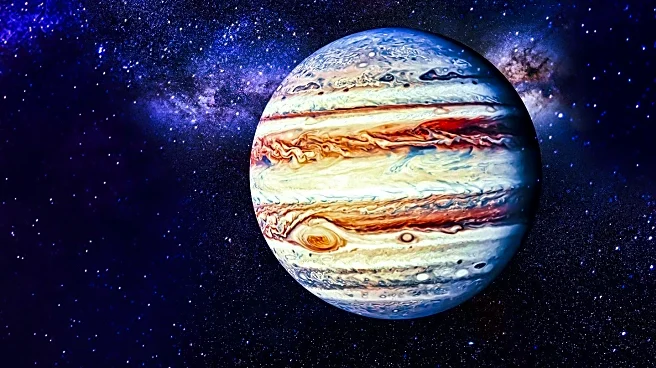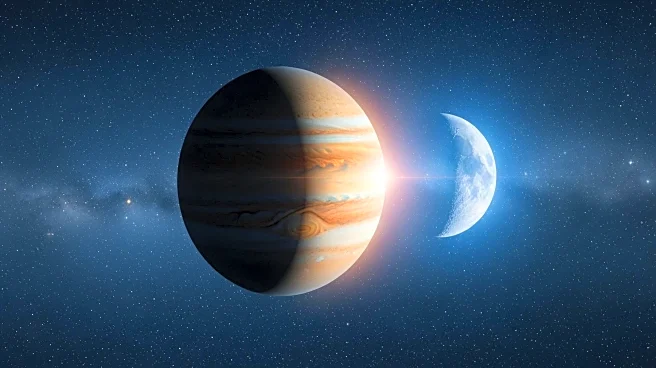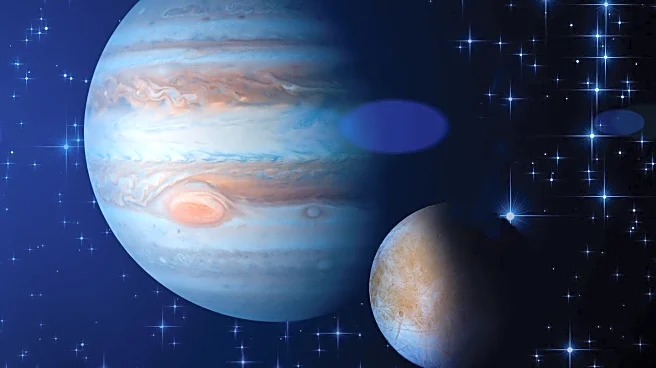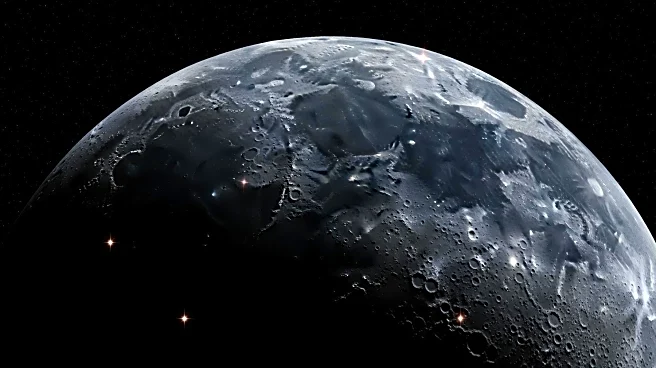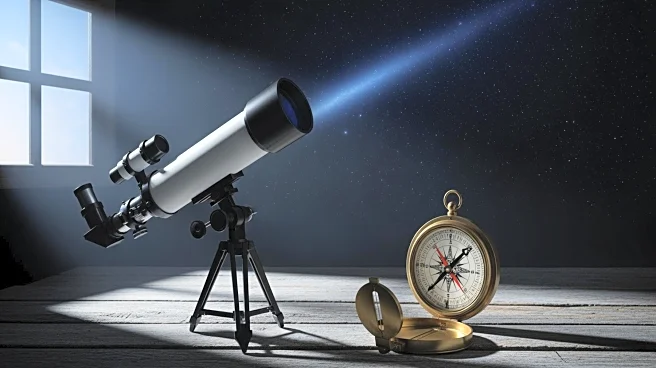What's Happening?
On November 10th, Jupiter reaches its stationary point in the constellation Gemini at 3 P.M. EST, marking a transition from prograde to retrograde motion. This astronomical event makes Jupiter observable
from approximately 9 P.M. local time, achieving a 30° altitude by midnight. The night features a series of Galilean moon transits, including Io's shadow initiating its transit across Jupiter's disk shortly after midnight EST on November 12th, followed by Io's own ingress approximately one hour later. Europa's shadow begins its passage across Jupiter around 2:45 A.M. EST, preceding Europa's full disk transit after 5 A.M. EST. Throughout the observation period, Ganymede and Callisto are positioned distinctly to Jupiter's west, while the nearby Waning Gibbous Moon may minimally impact telescopic viewing conditions.
Why It's Important?
The transition of Jupiter to retrograde motion is significant for astronomers and sky watchers, as it alters the planet's visibility and position in the night sky. This event provides an opportunity for enhanced observation of Jupiter and its moons, particularly Io and Europa, which are involved in transits across the planet's disk. Such transits offer valuable insights into the dynamics of Jupiter's moons and their interactions with the planet. The presence of the Waning Gibbous Moon may slightly affect viewing conditions, but the event remains a prime target for telescopic observation, contributing to ongoing research and public interest in planetary science.
What's Next?
As Jupiter continues its retrograde motion, astronomers and enthusiasts will have the opportunity to observe its changing position in the sky over the coming weeks. The ongoing transits of its moons will provide further opportunities for study and observation, potentially leading to new discoveries about the planet's atmospheric conditions and the behavior of its moons. Observatories and amateur astronomers are likely to continue monitoring these events, contributing to a broader understanding of the solar system's dynamics.
Beyond the Headlines
The retrograde motion of Jupiter and the transits of its moons highlight the intricate dance of celestial bodies within our solar system. These events underscore the importance of continued observation and study of planetary movements, which can yield insights into gravitational interactions and the evolution of planetary systems. The cultural fascination with such astronomical phenomena also reflects humanity's enduring curiosity about the universe and our place within it.


